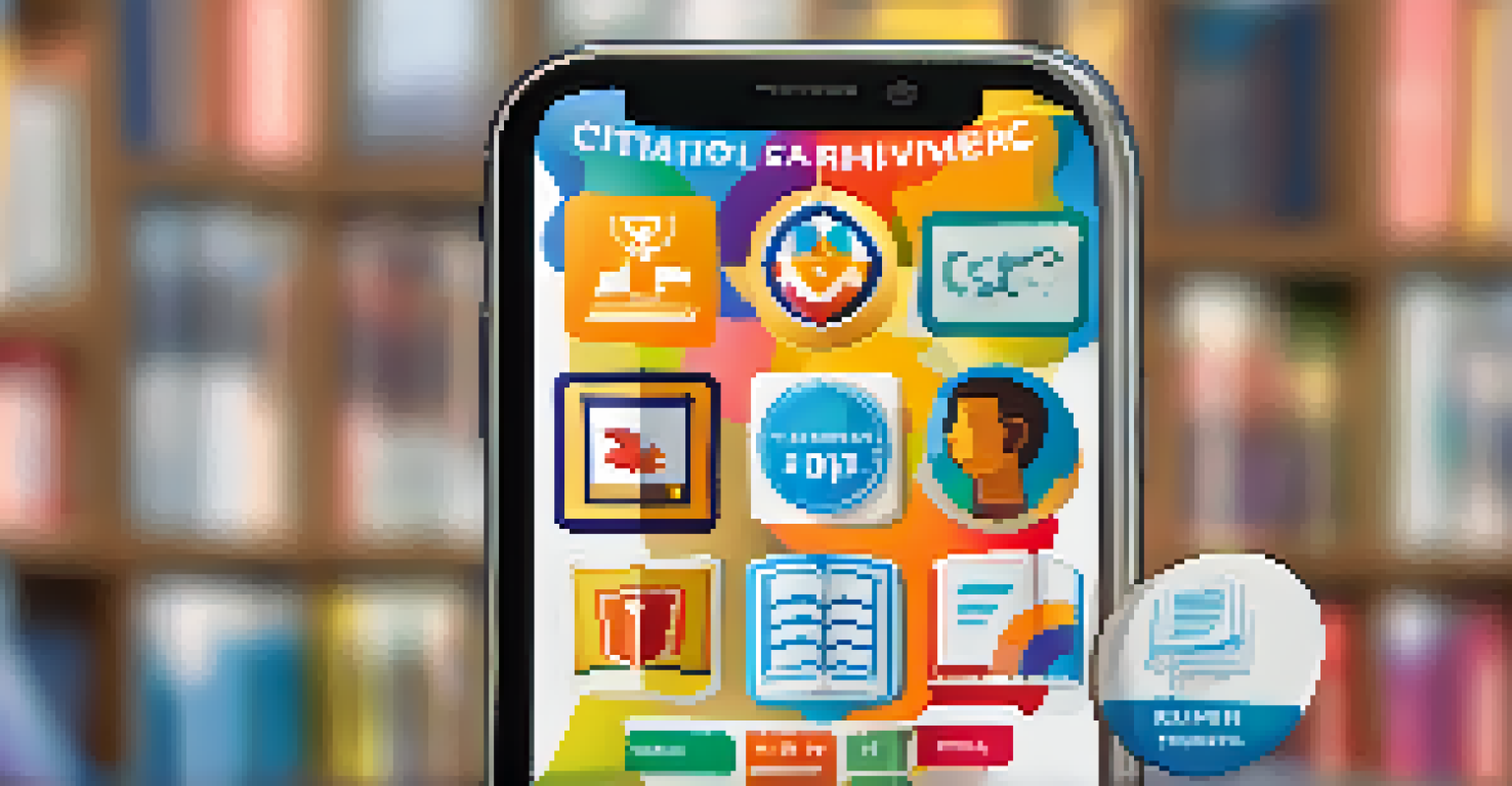Recognition Systems: Driving Innovation in Education

Understanding Recognition Systems in Education
Recognition systems are technologies designed to identify and evaluate students' skills and achievements. They can range from simple badge systems to complex AI-driven analytics that track learning progress. These systems aim to motivate students by acknowledging their accomplishments, fostering a sense of pride and engagement in their educational journey.
Recognition is not a scarce resource. You can't use it up or run out of it. The more you give, the more you have.
In an age where traditional grading may not fully capture a student's capabilities, recognition systems offer a more holistic approach. They assess a variety of skills, including social and emotional learning, which are crucial for a well-rounded education. By providing this broader view, educators can better support individual learning paths.
For example, a student excelling in group projects may receive recognition for teamwork, while another might shine in creative writing. This personalized acknowledgment helps students feel valued and encourages them to pursue their interests, ultimately leading to a more dynamic learning environment.
The Role of Technology in Recognition Systems
Technology plays a pivotal role in the effectiveness of recognition systems in education. With advancements in artificial intelligence and machine learning, these systems can analyze vast amounts of data to provide accurate assessments. This capability allows educators to track student progress in real-time and make informed decisions about their teaching strategies.

Moreover, mobile applications and online platforms have made it easier for students to receive instant feedback and recognition. For instance, a student might receive a digital badge on their phone for completing a challenging assignment, reinforcing their achievements immediately. This instant gratification can significantly boost motivation and engagement.
Recognition Systems Enhance Learning
These systems acknowledge students' diverse skills, fostering motivation and engagement in their educational journey.
Additionally, technology facilitates collaboration among educators, allowing them to share best practices and refine recognition criteria. By harnessing the power of technology, schools can create a culture of recognition that transcends traditional educational boundaries.
Benefits of Implementing Recognition Systems
Recognition systems offer a multitude of benefits for both students and educators. For students, these systems can enhance self-esteem and motivation, as they receive acknowledgment for their hard work and unique talents. This recognition not only boosts confidence but also encourages a growth mindset, where students are more willing to take on challenges.
What gets recognized gets repeated.
From an educator's perspective, recognition systems can lead to improved classroom dynamics. By spotlighting individual achievements, teachers can foster a more inclusive environment where every student feels valued. This approach can also help in identifying students who may need additional support or resources.
Furthermore, these systems can facilitate communication between teachers, students, and parents. Regular updates on student progress can empower parents to engage more actively in their child's learning journey, creating a supportive network that reinforces educational success.
Challenges in Implementing Recognition Systems
While the advantages of recognition systems are significant, implementing them is not without challenges. One major hurdle is ensuring that the criteria for recognition are fair and transparent. If students perceive the system as biased or unclear, it can lead to disillusionment and reduced motivation.
Additionally, educators may face resistance when integrating new technologies into their teaching practices. Training staff and ensuring they are comfortable with the systems is crucial for success. Without proper support, teachers may struggle to effectively utilize these tools to benefit their students.
Technology Drives Effective Recognition
Advancements in AI and mobile platforms enable real-time tracking and instant feedback, creating a culture of recognition.
Lastly, maintaining a balance between recognition and academic rigor is essential. If students focus solely on earning badges or accolades, they may overlook the importance of mastering core subjects. It's vital to create a culture where recognition complements traditional learning rather than replacing it.
Case Studies: Successful Recognition Systems in Action
Several schools and educational institutions have successfully implemented recognition systems that have transformed their learning environments. One notable example is a high school that introduced a digital badge system to recognize students for various achievements, from academic excellence to community service. This initiative not only motivated students but also fostered a sense of community within the school.
Another inspiring case is a university that incorporated peer recognition into its curriculum. Students were encouraged to acknowledge each other's contributions in group projects, promoting collaboration and mutual respect. This practice not only enhanced student relationships but also helped develop essential teamwork skills.
These case studies highlight the potential of recognition systems to create positive educational experiences. By learning from these examples, other institutions can adapt similar approaches to meet their unique needs and contexts.
Future Trends in Recognition Systems for Education
Looking ahead, recognition systems in education are poised for even greater innovation. With the ongoing development of AI and data analytics, we can expect more personalized recognition experiences tailored to individual student needs. This level of customization could help educators provide targeted support and resources, ultimately enhancing learning outcomes.
Furthermore, as educational institutions increasingly embrace remote and hybrid learning, recognition systems will need to adapt. Digital platforms that allow for virtual recognition and engagement will become essential, ensuring that all students, regardless of their learning environment, feel valued and acknowledged.
Challenges in Implementation Persist
Ensuring fairness, overcoming resistance from educators, and balancing recognition with academic rigor are crucial for success.
Finally, as the importance of social and emotional learning continues to grow, recognition systems will likely expand to incorporate these elements. A focus on mental well-being and interpersonal skills will create a more holistic educational experience, preparing students not just academically but also socially for future challenges.
Conclusion: The Impact of Recognition Systems on Education
In conclusion, recognition systems have the potential to drive innovation in education by fostering a culture of achievement and engagement. By acknowledging students' successes, we can motivate them to pursue their passions and embrace lifelong learning. The benefits extend beyond individual students, positively impacting educators and the broader school community.
However, it is essential to navigate the challenges associated with implementing these systems thoughtfully. By ensuring fairness, providing adequate training, and maintaining academic rigor, educators can create a recognition system that truly enhances the learning experience.

As we continue to explore the possibilities of recognition systems, it is clear that they hold the key to a more inclusive, engaging, and effective educational landscape. Embracing these innovations will not only benefit current students but also shape the future of education for generations to come.